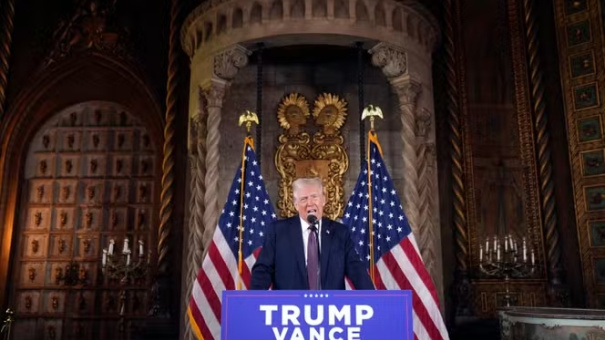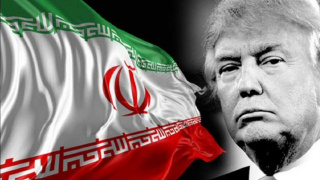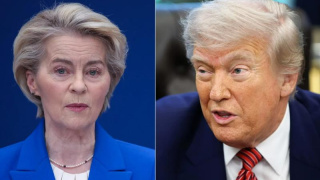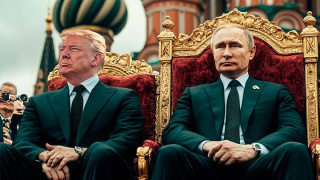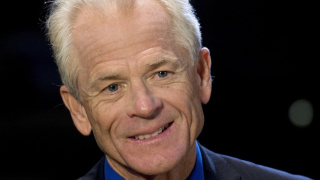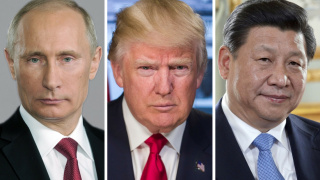Trump and the revival of Pan-Americanism
On 7 January 2025, at a press conference at his residence in Mar-a-Lago, Florida, US President-elect Donald Trump reaffirmed his intention not only to make Canada the 51st state of the United States of America, but also to annex the Panama Canal and Greenland, using force if necessary.
Shortly after the resignation of Justin Trudeau, the Canadian Prime Minister, at the beginning of January, the new American President published on his X network a map of the United States that included Canada. This statement, relayed and supported by Elon Musk, caused shock and consternation not only in Canada but also in Europe.
The question is whether these statements are simply provocations aimed at creating a balance of power, particularly with Canada, in order to settle disputes between the two countries, or whether they reveal a deeper geopolitical vision that should be part of a new global geopolitics.
First of all, let's remember that Donald Trump wants to break with the Trilateralists and neo-conservatives who, for decades, have pursued a policy of American wars around the world with the aim of imposing their interests under the pretext of fighting autocracies and expanding human rights.
It is therefore possible that the objective of America First should be interpreted first and foremost as a return to the Monroe Doctrine and pan-Americanism, a desire on the part of the United States to create, under its command, a vast island-continent America, powerful both on its Arctic side thanks to Canada and Greenland, and on its Latin American side by making the Gulf of Mexico the Gulf of America and annexing the Panama Canal.
The Monroe Doctrine is a founding element of American foreign policy. At the beginning of the XIXᵉ century, many Latin American countries gained independence, particularly following the wars of independence led by figures such as Simón Bolívar or José de San Martín. The United States, which had itself declared independence in 1776, kept a close eye on the upheavals in Europe and Latin America. They feared that after the Napoleonic Wars, the European powers (Spain, France, Russia, etc.) would try to reconquer or expand their colonies on the American continent.
On 2 December 1823, President James Monroe set out the principles of what was to become the Monroe Doctrine. The first principle was "America for Americans". The American continent would no longer be open to European colonisation, and any European intervention in America would be considered a threat to the peace and security of the United States. The second principle, "mutual non-intervention", is worth remembering because it has clearly been forgotten a century later by Washington. The United States promised not to interfere in the internal affairs of the European powers or in their existing colonies. The third principle was that the Monroe Doctrine became a pillar of US foreign policy.
In parallel with the Monroe Doctrine, the idea of Pan-Americanism emerged, the idea that the American continent should be unified around issues of common interest. Pan-Americanism was championed by both the United States and the Latin American states. At the Congress of Panama in 1826, Simon Bolivar wanted to create a political and defensive union between the countries of Latin America. These were the foundations of a common regional approach. On the other hand, under the impetus of the United States, the Pan-American Union was created in 1910, followed by the Organisation of American States (OAS) in 1948. But the imperialism of the United States over the other American states will always clash with the ideal of equality and solidarity that is inseparable from pan-Americanism.
Trump and Musk, no doubt because they want to replace the imperialism of the Trilateralists and Neo-conservatives with an ambitious project and not appear to be isolationists, are reviving both the Monroe Doctrine and Pan-Americanism through their declarations.
The idea of a merger between Canada and the United States is without doubt the boldest of Trump's statements. From the point of view of US interests, it would have several advantages. Firstly, greater access to natural resources. Canada has immense reserves of natural resources, including oil (tar sands), mining (minerals, metals, rare earths), forestry and water (fresh water). A merger would give the United States direct access to these resources, without the need for trade agreements or customs constraints.
Secondly, the merger would create a much larger domestic market. The US and Canada are already closely linked commercially (via the AEUMC, formerly NAFTA). However, a merger would remove any remaining customs or regulatory barriers, which could, at least in theory, encourage the free movement of goods, services and capital.
The integration of Canada would also constitute a geopolitical reinforcement. The Arctic sea routes, which are gradually opening up as the ice melts, could become a major issue, and Canada has territorial claims there. For the United States, control of a larger part of the north of the continent and of Arctic waters would be a strategic advantage.
Another advantage would be harmonisation and synergies in terms of infrastructure (pipelines, railways, bridges, etc.) and integrated defence systems within NATO and NORAD. Further integration could simplify this cooperation, or even strengthen it in certain areas (surveillance, intelligence, etc.).
However, geopolitical reasoning comes up against the reality of very distinct sovereignties with very different political and cultural systems. What would happen, for example, to bilingualism (French/English) or the Canadian healthcare system (which is far more protective than the American system) in the context of a merger? We should also remember that Canada remains a constitutional monarchy dependent on London, and it is astonishing that we have not heard the King of England, the sovereign of Canada, react to Trump's statements!
The unrealistic nature of a merger at this stage suggests that Trump's strategy is based on creating a favourable balance of power through provocation. Donald Trump has a number of grievances with Canada, such as the problem of immigration. Figures from Customs and Border Protection show that in 2024 the US Border Patrol prevented nearly 25,000 illegal crossings at the US border, ten times more than in 2022. Clearly, the border with Canada is one of Donald Trump's targets.
The same annexationist logic on the part of Trump has manifested itself in recent days with regard to Greenland, an immense autonomous territory under the sovereignty of the Kingdom of Denmark.
Greenland, although an isolated and sparsely populated island, is of considerable strategic interest. The idea of "control" of Greenland by the United States is not new: it had already emerged in the XXᵉ century (notably during the Second World War and the Cold War), and then resurfaced in a more mediatised way in 2019 also with Donald Trump. American motivations can be summed up in four main points. The first point relates to Greenland's geostrategic and military interest for the United States. Greenland occupies a key position in the Arctic, a region that is becoming increasingly coveted as the ice retreats and northern sea routes become accessible.
The American air base at Thule (Pituffik Space Base) in northern Greenland (set up during the Cold War) serves as a relay for satellite surveillance, missile warning and detection of objects in orbit. Strengthening its presence in this territory gives the United States an edge in military surveillance, particularly in relation to Russia, which also has a strong presence in the Arctic. We might also ask whether Russia's lead in hypersonic missiles is not directly linked to this new American appetite. By controlling Greenland, the Americans are getting physically closer to Russian territory and perhaps they feel that this reduces the inferiority of their missiles compared with Russian missiles. This is a possibility that should not be ruled out. Even if they will never say so, the Americans may be aware of their inferiority to Russia in the nuclear and ballistic fields.
Greenland's second major interest for the United States is its natural resources. The situation has changed since 2007, when the United States Geological Survey (USGS) discovered significant reserves of oil, gas and metals in the Arctic region. According to surveys carried out by the USGS in 2008, the Arctic as a whole contains almost 31 billion barrels of oil equivalent, or 13% of the world's undiscovered oil resources and 30% of its natural gas reserves. Located on the iron and coal belt that stretches from Alaska to Scandinavia, Greenland is also believed to harbour immense reserves of ores and rare earths (metals used in high-tech manufacturing, 95% of which are produced in China), as well as the world's third-largest uranium resources. These discoveries have not escaped either China or the United States. However, with 82% of Greenland's surface covered by ice, the subsoil is particularly difficult to exploit. Not to mention the risk of collision with icebergs.
China has increased its influence in Greenland in recent years, and is already the world leader in rare metals, and more particularly rare earths. For Washington, direct control of Greenland would put an end to China's growing influence there.
Since 2009, Greenlanders have been responsible for deciding how their raw materials are used. Access to Greenland's mineral resources is considered crucial by the Americans, who signed a memorandum on cooperation in this sector in 2019. The Europeans followed suit four years later with their own collaboration agreement. Greenland's soils are extremely well mapped, enabling a detailed map of resources to be drawn up: the European Union has identified 25 of the 34 minerals on its official list of essential raw materials, including rare earths. But will the European Union, which has at least as great a need as the United States to secure its future supplies of rare metals, be able to stand up to Washington over Greenland? Nothing is less certain.
Thirdly, Greenland would give the United States a major advantage in the new geopolitical competition for control of the Arctic Ocean. The Arctic has become a field of competition between the major powers: the United States, Russia and China (the latter is investing massively in exploration and the development of polar infrastructures).
By seeking to consolidate its presence in Greenland, the United States would be countering both the influence of China (which is investing in mining and infrastructure projects in Greenland) and Russia's military projection in the Arctic. The shorter northern shipping routes linking Europe to Asia are a major commercial issue: controlling or influencing these routes offers a strategic advantage.
Trump is talking about buying Greenland. Buying territory is nothing new for the United States. It bought Louisiana from France in 1803. Louisiana at the time was much more than the contemporary state of Louisiana. France sold 2,145,000 km2 of territory, or 22.3% of the current surface area of the United States, for a pittance! The United States also bought Alaska in 1867.
Trump's desire to seize Greenland, a territory whose capital (Nuuk, just 240 km south of the Arctic Circle) is closer to New York than Copenhagen, seems much stronger than his ambition to control Canada. For Canada, Trump spoke of using "economic force", while for Greenland he wrote at the end of December "for reasons of national security and freedom around the world, the United States of America believes that ownership and control of Greenland is an absolute necessity", and a few weeks later he refused to rule out the use of military force to acquire this Danish territory. As said before, Trump was already showing this interest in Greenland in 2019. There is no doubt that Trump's ambition stems from his obsession with halting China's rise to world number 1. For Trump, the enemy is China, not Russia, and this is what makes an agreement on Ukraine between the United States and Russia possible.
But if the United States starts a tug-of-war with the European Union over Greenland, the very future of NATO will be at stake. Denmark is one of NATO's staunchest members. Trump is also planning to call into question the way NATO operates, and he has not even ruled out the possibility that the United States might abandon the alliance. So what does he have in mind? Use the threat of Greenland as a gun to the head of his NATO partners? NATO is also the tool that prevents Europeans from getting along with Russia rather than with the United States. Can Washington destroy what has been its plaything since the end of the Second World War?
It is difficult at this stage to understand Trump's priorities. He is weighing up his ambitions and creating balances of power, no doubt in order to trade one priority for another. But one thing is certain. Trump is on the side of pure geopolitics. His vision is that, faced with China, the United States must become a stronger territorial and geographical power and that it must increase its control over mineral resources. His geopolitical vision also reveals the importance he attaches to the Arctic Ocean. He has undoubtedly understood that Russia is in a position to be the leading Arctic power in the 21st century.
